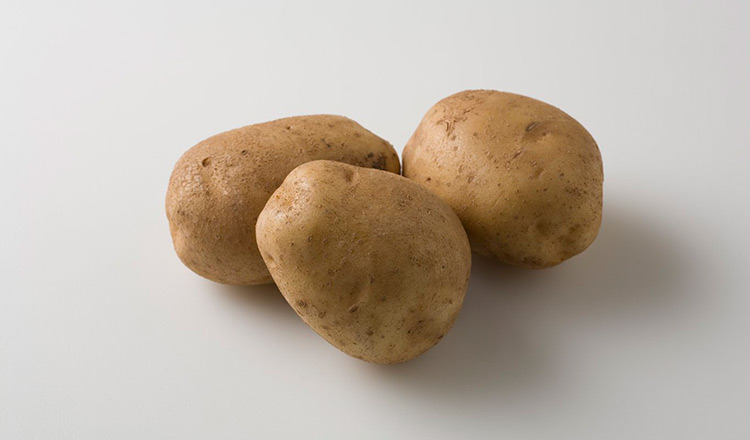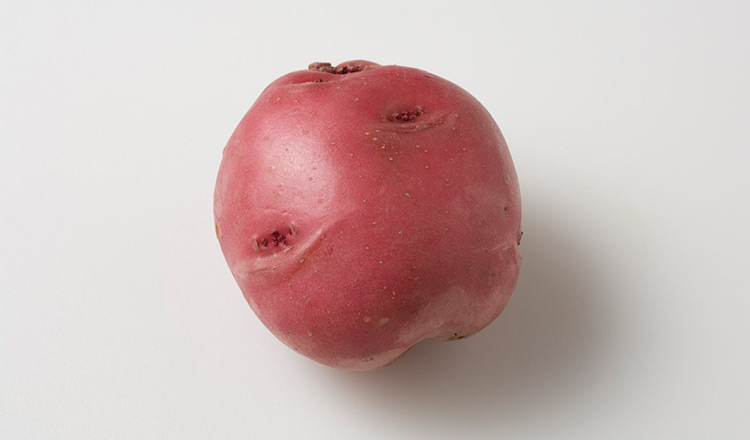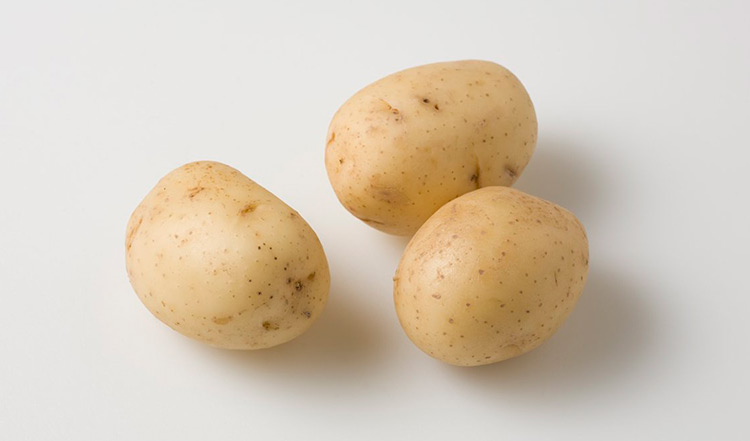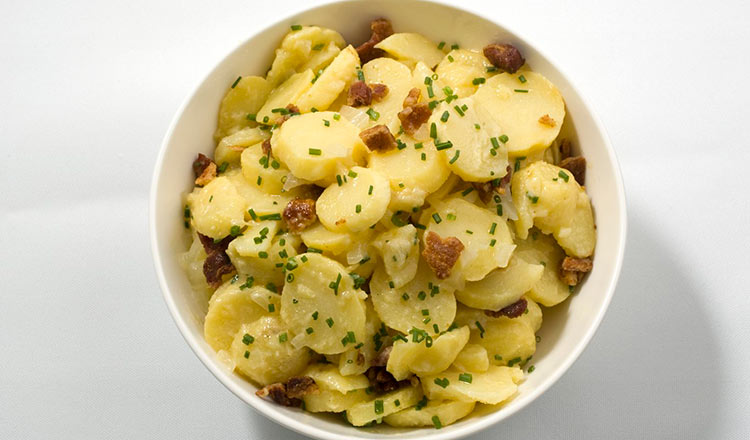Potato varieties differ in starch and moisture content, skin and flesh color, and shape. Sweet potatoes and yams, although not botanically related to the potato, share several characteristics with it and can be treated in the same manner. Each cooking technique produces a markedly different texture, flavor, and appearance in potatoes.
Knowing the natural characteristics of each kind of potato and the ways in which a particular technique can either enhance or detract from these characteristics is important to any cook.
Low Moisture/High Starch

Potatoes in this category include Idaho or russet (also known as baking or bakers), purple potatoes, and some fingerling varieties. The higher the starch content, the more granular and dry a potato is after it is cooked. The flesh is easy to flake or mash. These potatoes, desirable for baking and puréeing, are also good for frying because the low-moisture content makes them less likely to splatter. Their natural tendency to absorb moisture also makes them a good choice for scalloped or other en casserole potato dishes.
Moderate Moisture and Starch

Potatoes in this category include so-called all-purpose, boiling, chef’s, Maine, and US 1. It also includes red-skin, waxy yellow (e.g., Yellow Finn and Yukon Gold), and certain fingerling varieties. Potatoes with moderate amounts of moisture and starch tend to hold their shape even after they are cooked until tender. This makes them a good choice for boiling, steaming, sautéing, oven roasting, and as a component of braises and stews. They are frequently used in potato salads and soups. Many chefs like to use waxy yellow potatoes for baking, puréeing, and casserole-style dishes because of their outstanding flavor.
High Moisture/Low Starch

Potatoes in this category include “new” (any potato that is harvested when less than 1 1/2 inches in diameter) and some fingerling varieties. The skin of new potatoes is tender and does not need to be removed prior to cooking or eating. Their naturally sweet, fresh flavor is best showcased by simple techniques such as boiling, steaming, or oven roasting.
Now that you know your spuds, try one of our favorite recipes!


